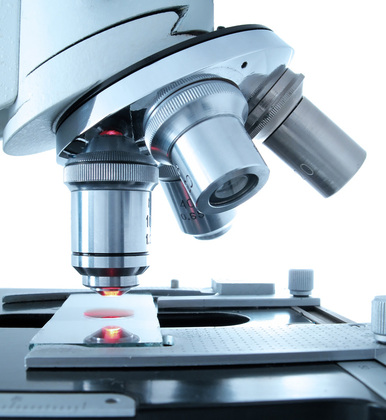
As we learned in one of our Prebola©Pandemic Preparedness classes, many glycosylated (sugarcoated) viruses, such as Ebola and influenza contain the galactose compound (4,5,6,7). Therefore these "natural antibodies" have the potential to begin targeting galactose-specific regions of glycosylated viruses days before the b-lymphocytes begin producing antiviral antibodies. Good news considering fatal Ebola infection has been found to impair, or even completely halt, the immune system’s manufacture of Ebolavirus-specific antibodies (8,9).
Furthermore, as a byproduct of metabolism, Lactobacillus Plantarum also produces a sugar known as mannose (1). Having a healthy amount of these “friendly” bacteria in the colon can therefore translate into higher mannose concentrations in the bloodstream. It's well documented that increased levels of biologically active compounds can decrease the number of their cellular receptors (10,11,12,13). Therefore an increased amount of extracellular mannose can decrease, or downregulate, its cellular receptor, known as “mannose-binding lectin,” or MBL (14). How does this affect you? For those who would like to decrease the potential for Ebola infection: mannose-binding lectin, as displayed on the surface of the cell, has been implicated as a primary site of access (like an open door) for the entry of Ebolavirus (15). Also of import, mannose and free mannose-binding lectins (which bind to the ebolavirus and aid in it's destruction) can be obtained through a diet rich in fruits, vegetables, and legumes (such as soybeans). Take home message? Long live the vegetarian and probiotian!
Intrigued? There’s so much more to learn! Click here to sign up for Prebola© today!
Are you a probiotic penny-pincher? Here’s a way to boost your probiotic yield and lower your economic expenditure by producing your own L. Plantarum rich "Ynogurt!" Why do we call it “Ynogurt" (pronounced NO-GURT)? First of all, because it does sound kind of catchy, but primarily because the FDA won’t allow anyone to officially call a mixture “yogurt” if it is lacking the two traditional strains of yogurt-producing bacteria.
Prebola© Ynogurt© Recipe:
3 1/2 cups soy milk or alternative (only soy actually curdles like regular yogurt but you can also use grain, or nut milk) Note: avoid preservatives such as calcium citrate, etc., as these will significantly slow bacterial culturing - we recommend using Trader Joe's plain soymilk.
2-5 Tbs thickener (arrowroot powder, ground chia seeds, ground flax seeds, etc.)
2 Tbs honey
1/4 tsp salt
1 capsule "Jarrow Formulas Ideal Bowel Support 299v" probiotic (see product details in reference section of this post) or 3-4 T leftover "Ynogurt" (see below for explanation)
Directions:
Heat milk to almost a boil, then allow to cool to about 105 degrees F (use a thermometer to check temperature). Combine soymilk (or alternative) honey, salt, and thickener in blender and mix thoroughly. Remove from saucepan and place into seal-able quart container (mason jar, etc.). Next open one capsule of probiotic and empty contents into thickened milk mixture. Place lid on container and shake well. Now wrap in towel and allow to incubate in a warm environment (85-105 degrees F). After approximately 5-7 hours you can refrigerate your Ynogurt to chill before serving.
Remember to save the last 3-4 Tablespoons to mix into another batch of Ynogurt in lieu of adding another capsule of probiotic. Store in refrigerator and discard unused Ynogurt after a few days or if you notice orange or red colored liquid (an indication of mold growth). Consider adding fruit jam, carob powder, etc. as a flavoring agent* if you do not prefer the taste of plain Ynogurt.
*Note: save 3-4 Tablespoons of plain Ynogurt before adding flavoring items if you plan on using this as a starter for another batch of Ynogurt.
| References: 1) J Sci Food Agric. 2011 Sep;91(12):2284-91. doi: 10.1002/jsfa.4456. Epub 2011 May 10. 2) http://www.virology.ws/2009/10/06/natural-antibody-protects-against-viral-infection/ 3) Eur J Immunol. 2007 May;37(5):1254-65. 4) J Virol. 2011 Oct;85(19):10010-20. doi: 10.1128/JVI.00301-11. Epub 2011 Jul 27. 5) Biochem Biophys Res Commun. 2011 Apr 1;407(1):74-8. doi: 10.1016/j.bbrc.2011.02.110. 6) Rapid Commun Mass Spectrom. 2010 Mar 15;24(5):571-85. doi: 10.1002/rcm.4410. 7) J Virol. 2004 Mar;78(6):2943-7. 8) Bull Exp Biol Med. 2001 Dec;132(6):1182-6. 9) PLoS Negl Trop Dis. 2010 Oct 5;4(10). pii: e837. doi: 10.1371/journal.pntd.0000837. 10) Diabetes. 1980 Feb;29(2):159-63. 11) J Neurochem. 2013 Dec;127(6):762-71. doi: 10.1111/jnc.12442. Epub 2013 Oct 13. 12) Front Psychol. 2014 Sep 17;5:919. doi: 10.3389/fpsyg.2014.00919. eCollection 2014. 13) J Cardiovasc Pharmacol. 2007 Jun;49(6):346-54. 14)J Immunol. 2010 Aug 1;185(3):1522-31. doi: 10.4049/jimmunol.1000774. Epub 2010 Jul 7. 15) PLoS One. 2013;8(4):e60838. doi: 10.1371/journal.pone.0060838. Epub 2013 Apr 2. | |

 RSS Feed
RSS Feed